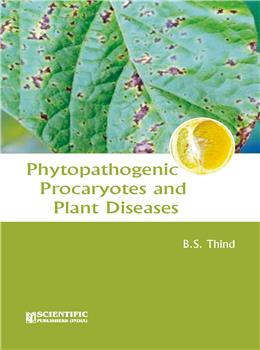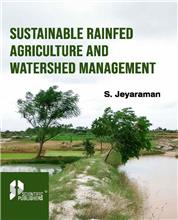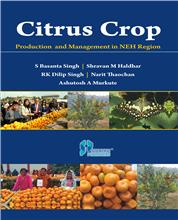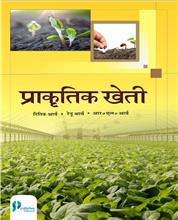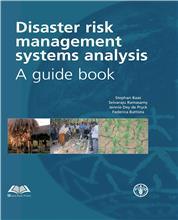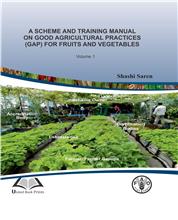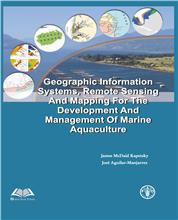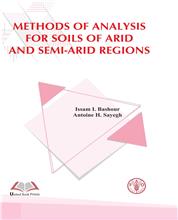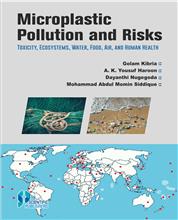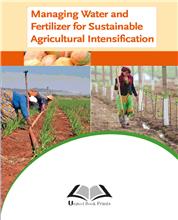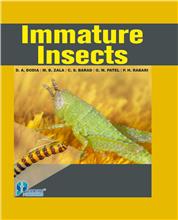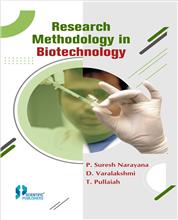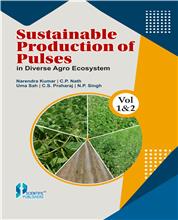Part One: GENERAL ASPECTS
1 Introduction
1.1. Phytobacteriology
1.2. Phytopathogenic procaryotes
1.2.1. Bacteria
1.2.1.1. Gram-negative bacteria having cell walls
1.2.1.2. Gram-positive bacteria having cell walls
1.2.1.3. Bacteria lacking cell walls
1.2.2. Archaea
1.3. Economic importance of phytopathogenic procaryotes
1.4. Historical review of plant bacteriology
2 The Procaryotic Cell
2.1. Size
2.2. Shape
2.3. Arrangement
2.4. Cell structure
2.4.1. Flagella and pili
2.4.2. Surface layers (capsule and slime layer)
2.4.3. Cell wall
2.4.3.1. Cell wall of Gram-positive bacteria
2.4.3.2. Cell wall of Gram-negative bacteria
2.4.3.3. Gram staining
2.4.4. Cytoplasmic (plasma) membrane
2.4.5. Cytoplasm
2.4.6. Ribosomes
2.4.7. Inclusion and storage products
2.4.8. Gas vesicles
2.4.9. Nucleoplasm (genophore)
2.4.10. Plasmids
2.4.11. Dormant forms
2.4.11.1. Spores
2.4.11.2. Cysts
3 Growth and Nutrition of Bacteria
3.1. Growth
3.1.1. Growth rate
3.1.2. Generation time
3.1.3. Growth curve of unicellular microorganisms
3.1.3.1. Lag phase
3.1.3.2. Log phase
3.1.3.3. Stationary phase
3.1.3.4. Decline phase
3.1.4. Measurement of growth
3.1.4.1. Cell count
3.1.4.1.1. Microscopic count
3.1.4.1.2. Colony count
3.1.4.2. Cell weight/mass
3.2. Factors affecting growth of bacterial cultures
3.2.1. Physical factors
3.2.1.1. Temperature
3.2.1.1.1. Psychrophiles
3.2.1.1.2. Psychrotrophs
3.2.1.1.3. Mesophiles
3.2.1.1.4 Thermophiles
3.2.1.1.5. Hyperthermophiles
3.2.1.2. Gaseous environment
3.2.1.2.1. Aerobes
3.2.1.2.2. Facultative anaerobes
3.2.1.2.3. Anaerobes
3.2.1.2.4. Microaerophiles
3.2.1.3. Hydrogen ion concentration (pH)
3.2.1.4. Water availability
3.2.1.5. Light
3.2.1.6. Nutritional factors (requirements)
3.2.1.6.1. Major elements
3.2.1.6.1.1. Carbon
3.2.1.6.1.2. Oxygen
3.2.1.6.1.3. Nitrogen
3.2.1.6.1.4. Hydrogen
3.2.1.6.1.5. Sulphur
3.2.1.6.1.6. Phosphorus
3.2.1.6.1.7. Metal ions
3.2.1.6.2. Trace elements
3.2.1.6.3. Growth factors
3.2.1.6.4. Carbon and energy sources
3.2.1.6.4.1. Photoautotrophs
3.2.1.6.4.2. Photoheterotrophs
3.2.1.6.4.3. Chemoautotrophs
3.2.1.6.4.4. Chemoheterotrophs
4 Variation in Bacteria
4.1. Mutation
4.1.1. Selection
4.1.2. Screening
4.2. Recombination
4.2.1. Transformation
4.2.2. Conjugation
4.2.2.1. F+ ´ F– mating
4.2.2.2. Hfr conjugation
4.2.2.3. F' ´ F– mating
4.2.3. Transduction
4.2.3.1. Generalized transduction
4.2.3.2. Specialized or restricted transduction
4.3. Plasmids
5 Classification of Bacteria
5.1. Nomenclature code
5.2. Species
5.3. Classification
5.3.1. Classification of plant pathogenic bacteria
5.3.1.1. Pathovar concept
5.3.1.2. International Standards for Naming Pathovars of
Phytopathogenic Bacteria
5.3.1.3. Genera of phytopathogenic bacteria
5.3.1.3.1. Acetobacter
5.3.1.3.2. Acidovorax
5.3.1.3.3. Agrobacterium
5.3.1.3.4. Arthrobacter
5.3.1.3.5. Bacillus
5.3.1.3.6. Brenneria
5.3.1.3.7. Burkholderia
5.3.1.3.8. ‘Candidatus Liberibacter’
5.3.1.3.9. ‘Candidatus Phlomobacter’
5.3.1.3.10. ‘Candidatus Phytoplasma’
5.3.1.3.11. Clavibacter
5.3.1.3.12. Clostridium
5.3.1.3.13. Corynebacterium
5.3.1.3.14. Curtobacterium
5.3.1.3.15. Dickeya
5.3.1.3.16. Enterobacter
5.3.1.3.17. Erwinia
5.3.1.3.18. Gluconobacter
5.3.1.3.19. Herbaspirillum
5.3.1.3.20. Janibacter
5.3.1.3.21. Janthinobacterium
5.3.1.3.22. Leifsonia
5.3.1.3.23. Nocardia
5.3.1.3.24. Pantoea
5.3.1.3.25. Pectobacterium
5.3.1.3.26. Pseudoalteromonas
5.3.1.3.27. Pseudomonas
5.3.1.3.28. Ralstonia
5.3.1.3.29. Rathayibacter
5.3.1.3.30. Rhizobacter
5.3.1.3.31. Rhizobium
5.3.1.3.32. Rhodococcus
5.3.1.3.33. Samsonia
5.3.1.3.34. Serratia
5.3.1.3.35. Sphingomonas
5.3.1.3.36. Spiroplasma
5.3.1.3.37. Streptomyces
5.3.1.3.38. Xanthomonas
5.3.1.3.39. Xylella
5.3.1.3.40. Xylophilus
6 Genome Evolution of Phytopathogenic Procaryotes
6.1. Bacterial genome
6.2. Pathogenicity islands
6.3. Horizontal gene transfer
6.4. Gall-forming Pantoea agglomerans- a case study
6.5. Evolution in Streptomyces species
6.6. Xa. oryzae pv. oryzae- a case of rapid evolution
7 Fastidious Phytopathogenic Procaryotes: Their
Cultivation and Characterization, and Plant Diseases
Caused by Them
7.1. Fastidious phytopathogenic procaryotes
7.2. Phytoplasma
7.3. Spiroplasma
7.4. Fastidious phloem-colonizing bacteria
7.5. Fastidious xylem-limited bacteria
8 Interactions among Plant Pathogenic
Bacteria and Other Microorganisms
8.1. Soil inhabitants/invaders
8.2. Plant growth-promoting rhizobacteria
8.3. Phylloplane
8.4. Endophytes
8.5. Interaction between fungal and bacterial plant pathogens
8.6. Interaction between bacterial plant pathogens
8.7. Interaction between plant pathogenic bacteria and nematodes
8.8. Interaction between bacterial and viral plant pathogens
9 Bacteriophages
9.1. Definition
9.2. Types of phages
9.3. Classification of phages
9.4. Phage or lysogenic conversion
9.5. Replication of phages
9.5.1. Adsorption or attachment of phage to host cell
9.5.2. Transfer of phage nucleic acid into bacterial cell
9.5.3. Replication of phage nucleic acid and proteins
9.5.4. Assembly of phage particles
9.5.5. Release of phage particles
9.6. Uses of phages
9.6.1. Phage therapy
9.6.2. Use in food industry
9.6.3. Identification of bacteria
9.6.4. Detection of bacteria from substrate
9.6.5. Disease forecasting
9.6.6. Control of bacterial plant diseases
10 Host-pathogen Relationship
10.1. Gene-for-gene hypothesis
10.2. Avirulence genes
10.3. Recognition of Avr proteins of pathogens by the host plant
10.4. Hypersensitive response and pathogenicity genes
10.5. Harpins
10.6. Bacterial secretion systems
10.6.1. Type I secretion system
10.6.2. Type II secretion system
10.6.3. Type III secretion system
10.6.4. Type IV secretion system
10.6.5. Type V (autotransporters) and VI (two-partner secretion) secretion systems
10.7. Pathogen effectors
10.8. Quorum sensing
10.8.1. Ag. tumefaciens
10.8.2. Pe. carotovorum subsp. carotovorum
10.8.3. Ral. solanacearum
10.8.4. Pa. stewartii subsp. stewartii
10.9. Role of toxins, enzymes and auxins in plant disease development
10.9.1. Toxins
10.9.1.1. Tabtoxin
10.9.1.2. Phaseolotoxin
10.9.1.3. Tagetoxin
10.9.2. Growth regulators
10.9.3. Enzymes
10.9.3.1. Pectinases
10.9.3.2. Cellulases
10.9.4. Extracellular polysaccharides
11 Diagnosis of Bacterial Diseases of Plants
11.1. Diagnosis
11.2. Monoclonal antibodies
11.3. Flow cytometry
11.4. Genomic techniques
11.5. Enrichment techniques
12 Disease Management with Biocontrol Agents, Bacteriophages, Bacteriocins and Siderophores
12.1. Biological control
12.2. Plant growth-promoting rhizobacteria
12.3. Induced systemic resistance
12.4. Bacteriophages
12.5. Bacteriocins
12.6. Siderophores
Part Two: SPECIFIC PLANT DISEASES
13 Description of Plant Diseases
13.1. Bacterial blight of rice
13.2. Bacterial leaf streak of rice
13.3. Yellow ear rot of wheat
13.4. Bacterial stripe and black chaff of barley
13.5. Bacterial stalk rot of maize
13.6. Bacterial leaf stripe of maize
13.7. Stewart’s wilt of corn
13.8. Red stripe of sugarcane
13.9. Ratoon stunting disease of sugarcane
13.10. Gummosis of sugarcane
13.11. Leaf scald of sugarcane
13.12. Bacterial wilt of solanaceous plants
13.13. Soft rot of fleshy vegetables and fruits
13.14. Blackleg of potato
13.15. Common scab of potato
13.16. Ring rot of potato
13.17. Black rot of crucifers
13.18. Bacterial spot of tomato and pepper
13.19. Bacterial canker of tomato
13.20. Bacterial speck of tomato
13.21. Bacterial blight of pea
13.22. Bacterial wilt of cucurbits
13.23. Angular leaf spot of cucurbits
13.24. Bacterial blight of cotton
13.25. Common and fuscous blights of bean
13.26. Halo blight of bean
13.27. Bacterial brown spot of bean
13.28. Soybean pustule
13.29. Bacterial blight of soybean
13.30. Bacterial blight of cowpea
13.31. Bacterial leaf spot of green gram
13.32. Halo blight of green gram
13.33. Bacterial leaf spot of black gram
13.34. Bacterial blight of moth bean
13.35. Bacterial blight of clusterbean
13.36. Bacterial leaf spot of hyacinth bean
13.37. Bacterial leaf spot and stem canker of pigeon pea
13.38. Bacterial blight of sesame
13.39. Bacterial leaf spot of sesame
13.40. Crown gall of plants
13.41. Hairy root of apple
13.42. Fire blight of pome fruit trees
13.43. Citrus canker
13.44. Citrus huanglongbing
13.45. Citrus stubborn disease
13.46. Bacterial canker and gummosis of stone fruit trees
13.47. Bacterial canker of mango
13.48. Pierce’s disease of grapevine
13.49. Bacterial canker of grapevine
13.50. Bacterial canker of kiwi
13.51. Bacterial blight of mulberry
13.52. Angular leaf spot of peepal
Index
Coloured Photographs of Symptoms of Plant Diseases
